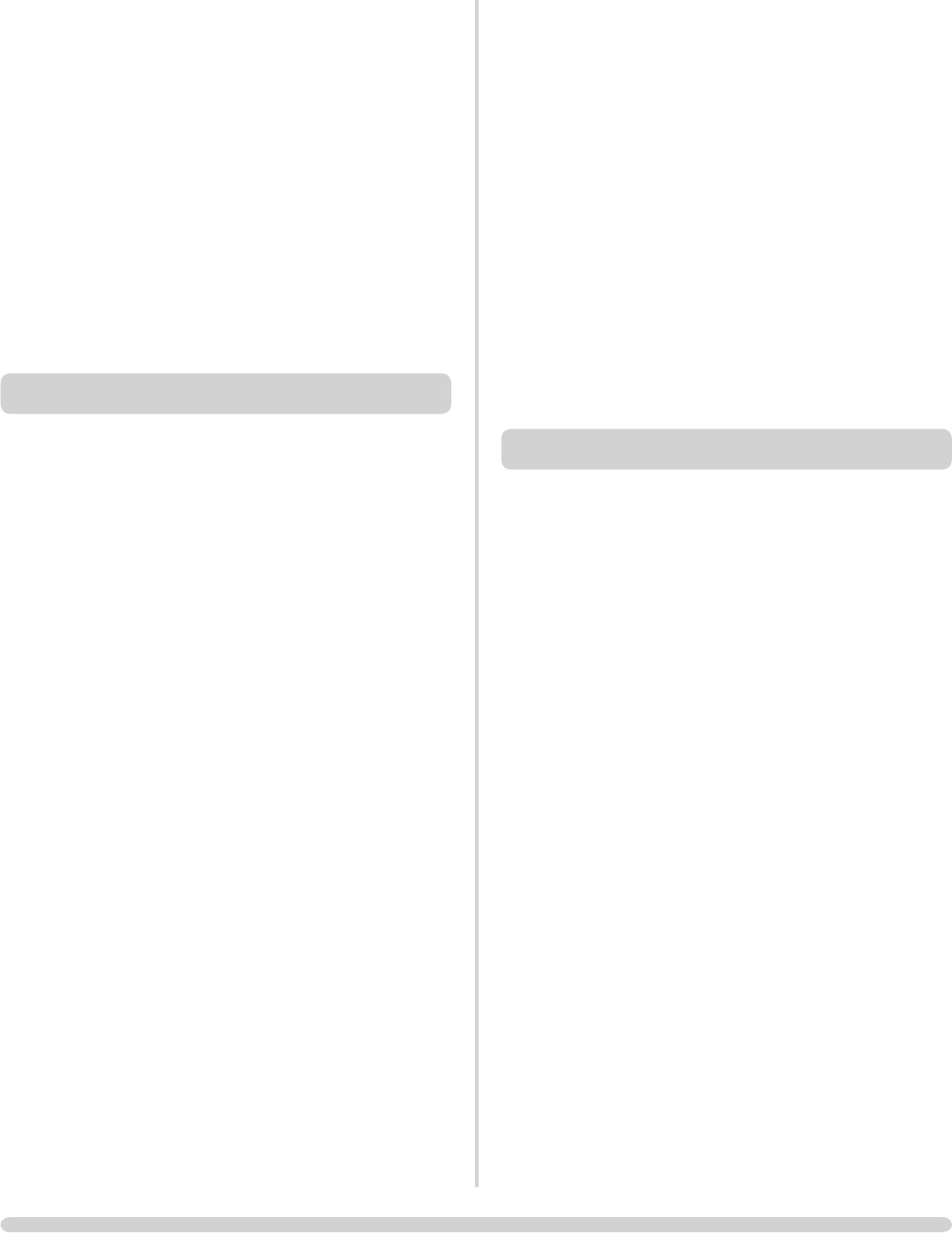
8
Damp / Rainy days – These sometimes result in problems
when lighting and maintaining the fire, due to the lower
flue temperatures and smaller difference between indoor
and outdoor temperatures reducing the flue draught. Also,
rain water running down the inside of the chimney reduces
the flue temperatures. To help with this problem care must
be taken to use good quality kindling wood, when starting
the fire, and running the stove at a higher heat setting than
normal for a period after start-up to fully heat the chimney.
It could be possible to fit a rain cowl to the chimney to
reduce this problem. Your appliance installer should advise
you on possible solutions.
If the Yeoman stove emits smoke into the room
continuously close the air controls and allow the stove to
go out, and ventilate the room to clear the fumes.
Do not re-light the appliance until the cause of the
problem is identified and rectified.
9. TROUBLESHOOTING
STOVE GLASS BLACKENING:
This occurs as a result of four possible causes:
1. Incorrect use of airwash – See the detailed operating
instructions which show the correct use of the combustion
air controls.
2. Burning unseasoned wood – See page 7 (section 9.1) for
more information on how to identify when your wood is
ready for burning. Properly seasoned logs will have been
kept for a minimum of a year but are best burnt at 2 years.
3. The stove being burned at too low a temperature - A
good working temperature is 300-500° F (120 – 250° C). A
stove pipe thermometer will help identify this problem.
(Part no 3046). Burning your wood stove with the airwash
control fully open for a period of around 20 minutes ought
to cure this. This might be caused by damping your stove
down overnight.
4. Problems with your flue – in particular insufficient air pull.
If your flue is not doing its job efficiently this can cause
blackening of the glass. A flue which is too short,
experiences a downdraft, needs lining or has too many
bends can promote blackening. If you suspect your flue may
be contributing to the blackening of your stove glass you
should contact the installer or a flue specialist.
Heavy tar deposits should be removed using Glass Cleaner
(Part. 4103 See section 2 page 8).
STOVE GLASS CRACKING:
Please ensure when replacing the glass in your stove that
you do not over tighten the screws on the glass clips as this
will cause stress in the glass and with the intense heating
and cooling of burning your stove it may well cause the
glass to crack.
STOVE IS PRODUCING TAR:
You can recognise this from the following traits:
Very strong pungent smell shortly after the stove is lit and as
the stove heats up, glass blackening and, possibly, can be
seen as a thick, brown and sticky material oozing from your
stove pipe joints.
This is caused by burning damp wood and burning your
stove at too low a temperature. To resolve this only use well
seasoned wood and ensure your stove is operating in the
ideal temperature range. Tar is a major cause of chimney
fires - if you experience problems with tar build up, please
consult a chimney sweep before continued use of your
stove.
Ideal working temperature range is 130°C is 130°C and
240°C (270°F – 465°F). If you fail to close down your
primary air control once the stove has heated up to this
range you may cause your stove to overfire and the
temperature to exceed the ideal range. Overfiring can cause
permanent damage to your stove and will invalidate your
warranty.
10. SEASONAL USE
10.1 If the stove is not going to be used during the warmer
periods of the year it is recommended to clean and service
the stove, see Maintenance and Servicing section (page 9).
10.2 The air controls should be set in the 50% open position to
keep the appliance ventilated, and stop the build-up of any
moisture inside.
10.3 Before re-lighting the stove remove the baffles, clear any
debris that may have accumulated, and check the flue is
clear of any blockages.
OPERATING INSTRUCTIONS


















